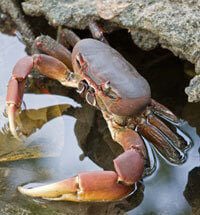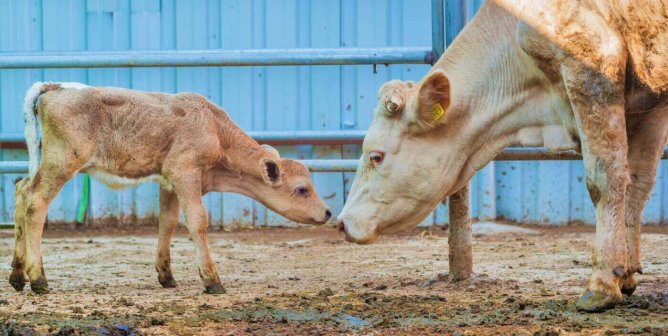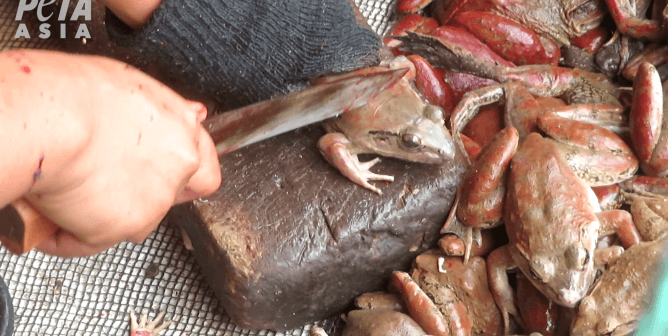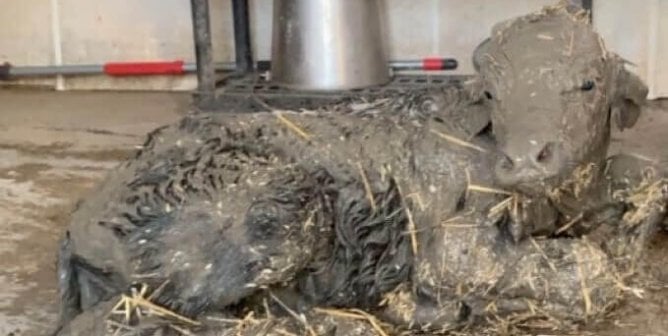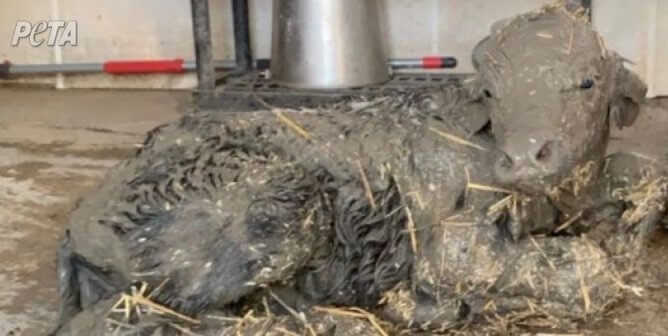Lobsters and Crabs Used for Food
Lobsters
Lobsters look very different from humans, so it’s hard for us to imagine how they perceive the world. For example, lobsters “smell” chemicals in the water with their antennae, and they “taste” with sensory hairs along their legs. But in many ways, lobsters aren’t so different from us.
Like humans, lobsters have a long childhood and an awkward adolescence. Just like us, they also carry their young for nine months and can live to be more than 100 years old.
Researcher Michael Kuba says that lobsters are “quite amazingly smart animals.” Like dolphins and many other animals, lobsters use complicated signals to explore their surroundings and establish social relationships. They take long-distance seasonal journeys and can cover 100 miles or more each year—assuming that they manage to avoid the millions of traps set along the coasts. Sadly, many lobsters don’t survive their most formidable predator: humans, who consume tens of millions of them each year in the United States alone.
Contrary to claims made by seafood sellers, scientists have determined that lobsters, like all animals, can feel pain. Also, when kept in tanks, they may suffer from stress associated with confinement, low oxygen levels, and crowding. Most scientists agree that a lobster’s nervous system is quite sophisticated. Neurobiologist Tom Abrams says lobsters have “a full array of senses.”
Lobsters may feel even more pain than we would in similar situations. According to invertebrate zoologist Jaren G. Horsley, “The lobster does not have an autonomic nervous system that puts it into a state of shock when it is harmed. It probably feels itself being cut. … I think the lobster is in a great deal of pain from being cut open … [and] feels all the pain until its nervous system is destroyed” during cooking.
“As an invertebrate zoologist who has studied crustaceans for a number of years, I can tell you the lobster has a rather sophisticated nervous system that, among other things, allows it to sense actions that will cause it harm. … [Lobsters] can, I am sure, sense pain.” —Jaren G. Horsley, Ph.D.
Anyone who has ever boiled a lobster alive knows that when dropped into scalding water, lobsters whip their bodies wildly and scrape the sides of the pot in a desperate attempt to escape. In the journal Science, researcher Gordon Gunter described this method of killing lobsters as “unnecessary torture.”
PETA has consulted with many marine biologists about the least cruel way to kill a lobster. While the experts couldn’t seem to agree on which method would cause the least suffering, they do agree that there is really no humane way to kill these sensitive and unusual animals.
Crabs
Many people have seen crabs scurrying along the sand and taking cover in their well-kept burrows, but these animals are still largely a mystery to even the most dedicated beachgoers. Marine biologists who study crabs are working to shed light on the fascinating lives of these crafty crustaceans.
Bromeliad crabs, who live in small pools of water in bromeliad flowers, provide their young with loving care. The mother crabs continue to feed and tend to their babies for several months after they are born. They work hard to keep their homes clean and comfortable for their young. S. Blair Hedges, a biologist who has researched the manner in which crabs care for their offspring, says, “The mother crab manipulates water quality by removing debris, by circulating the water to add oxygen to it, and by carrying empty snail shells into the water to buffer the pH levels and add calcium.”
Scientists have also found that crabs live by the saying “Love thy neighbor.” If an intruder tries to take over a male Australian fiddler crab’s burrow, his male neighbor will leave his own burrow to help fight off the thief.
Crabs are capable of learning from their mistakes and retaining that information so that they don’t make the same mistakes again in the future, and they adapt to changing cues in their environment. In one experiment, researchers moved a screen over the water above crabs to mimic the cues of a seagull or other predators passing overhead. At first, the crabs ran into their burrows, but after a few repetitions, the crabs learned that the darkness didn’t correspond with danger, and they no longer fled.
Crabs have well-developed senses of sight, smell, and taste, and research indicates that they have the ability to sense pain. They have two main nerve centers, one in the front and one to the rear, and—like all animals who have nerves and an array of other senses—they feel and react to pain. Dr. Robert Elwood, a professor of animal behavior at Queen’s University Belfast who has studied crustaceans for decades, says, “Denying that crabs feel pain because they don’t have the same biology [as mammals] is like denying they can see because they don’t have a visual cortex.”
Sadly, humans in the United States kill hundreds of millions of crabs every year. Fishers use several methods to catch crabs, including setting traps in shallow water and dragging huge nets along the ocean floor. These methods also capture nontarget animals such as birds, fish, and other marine animals—termed “bycatch” by the fishing industry—who are thrown back into the water when they are often dead or dying.
The crabs are crowded together in holding containers while they await their fate. Scared and confused, they may fight with each other after already sustaining injuries from rough handling. Many crabs have their legs damaged and torn off when fishers quickly rip them from the nets. Countless crabs die each year before they even reach the market.
Like lobsters, crabs are often thrown into pots of scalding-hot water and boiled alive. The crabs will fight so hard against a clearly painful death that their claws often break off in their struggle to escape. Some crabs used for food are electrocuted, some are chopped up, and others are microwaved—all while they are still conscious.
A PETA eyewitness documented workers at a Linda Bean’s Maine Lobster slaughterhouse as they tore live lobsters and crabs limb from limb, ripped their heads off, impaled animals on spikes, and dumped them into boiling water, among other abuses. After PETA filed a complaint with the Food and Drug Administration, the agency inspected Linda Bean’s slaughterhouse and cited it for serious food-safety violations that may be “injurious to [human] health.”
The best way to help put an end to this cruelty is to go vegan. Order PETA’s free vegan starter kit for great tips and recipes to help you make the transition to cruelty-free eating.
